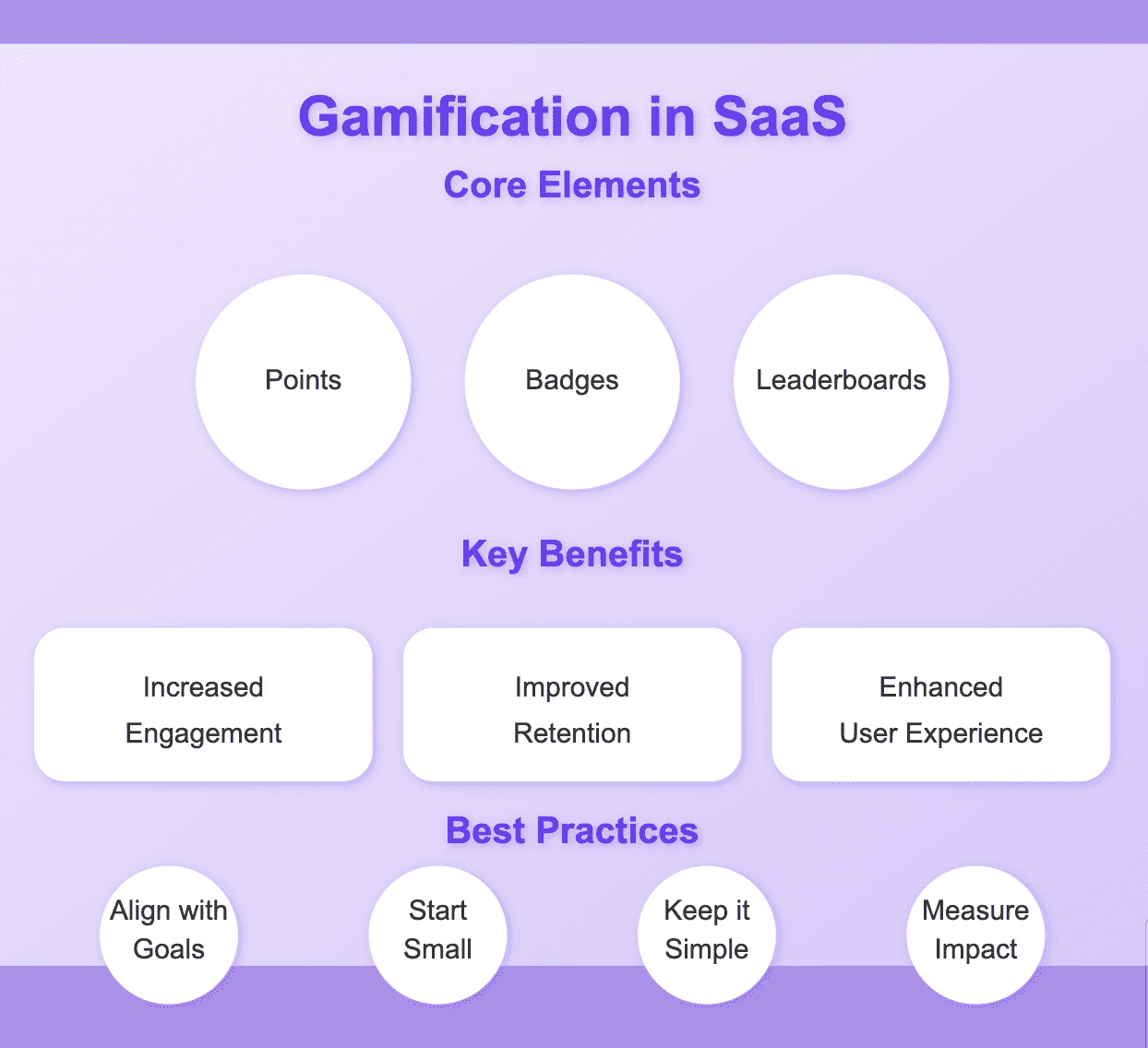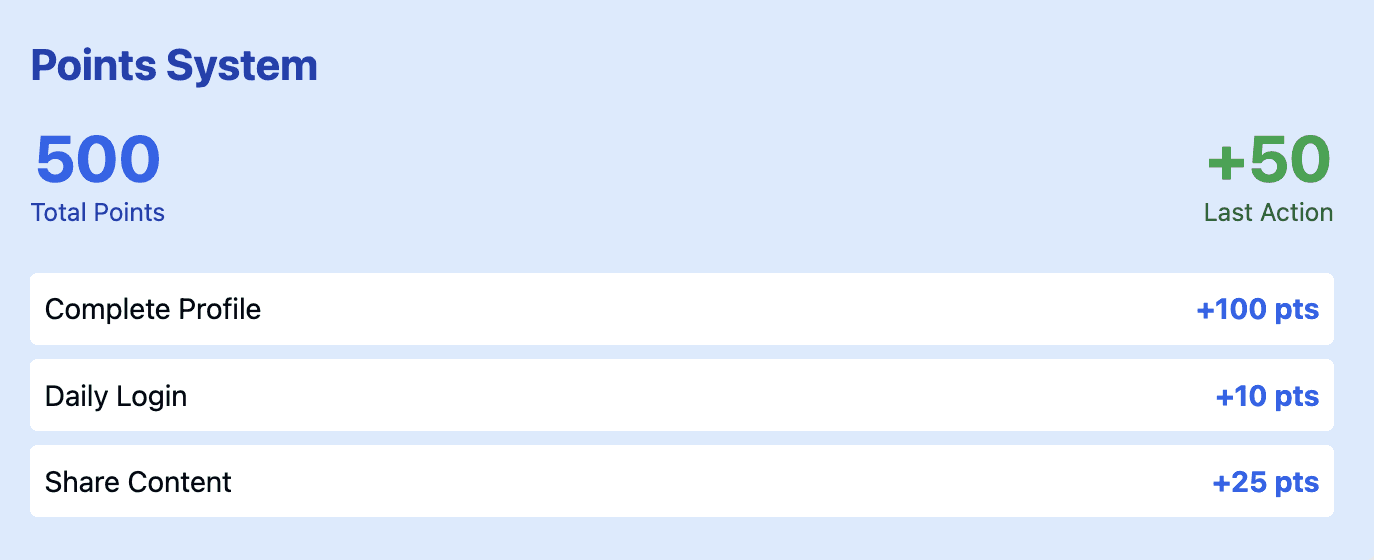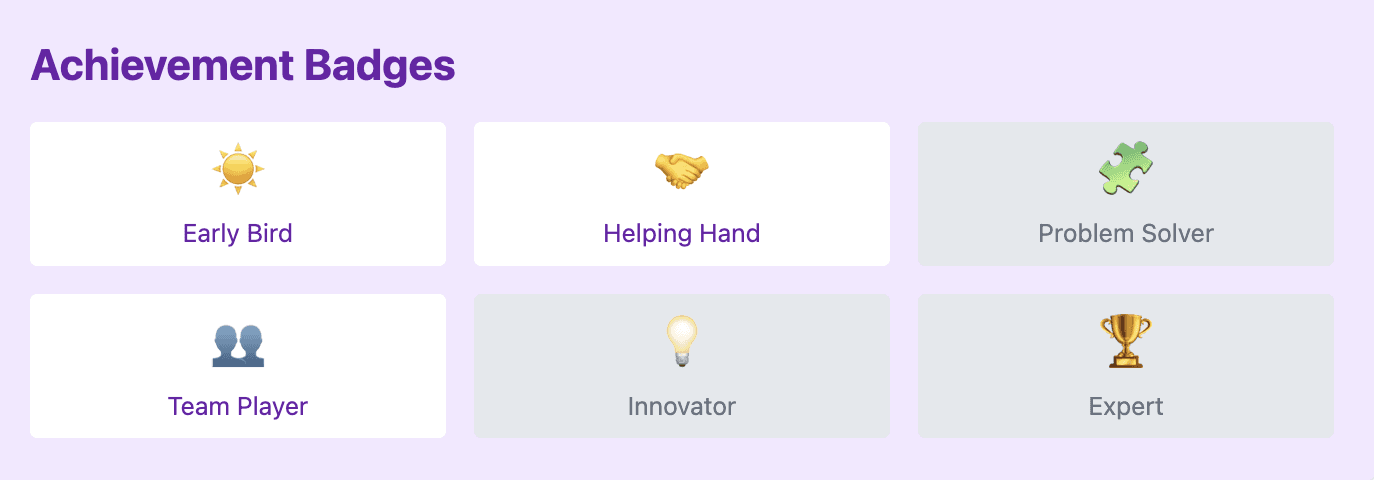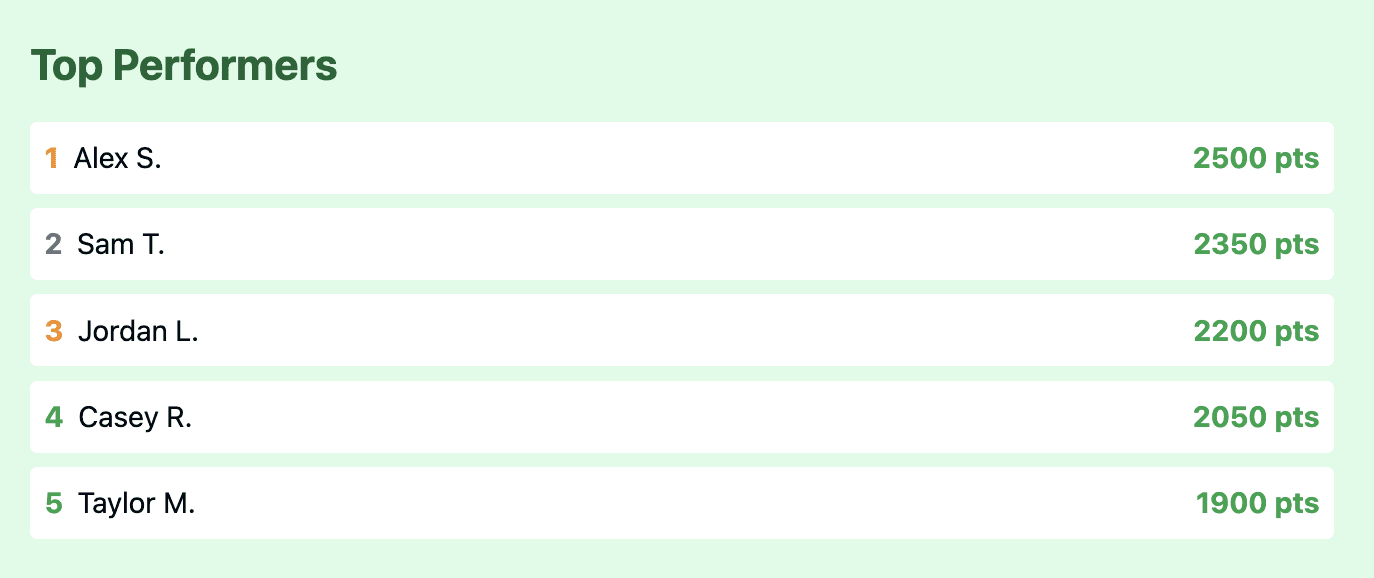
Gamification in SaaS for long-term user engagement

by
Wiktoria Slowikowska
Oct 10, 2024
Identify and convert your most valuable users
Sign Up
Keeping users engaged is crucial for success. With new software options popping up all the time, having a good product isn't enough anymore. Smart SaaS companies are using gamification to make their products more appealing and keep users coming back.
Gamification in SaaS is more than just adding fun elements. It's about using ideas from games to solve real business challenges. This approach can help with things like making it easier for new users to learn the software, encouraging people to use more features, and stopping users from leaving.
By turning everyday tasks into engaging activities, gamification helps turn casual users into loyal fans. When done right, it can boost important numbers like how many people use the software daily, how long they spend using it, and how much value each customer brings over time.
What is Gamification in SaaS?

At its core, gamification is the art of applying game-design elements and principles to non-game contexts. In the realm of SaaS, this means integrating features like points, badges, leaderboards, and challenges into software applications. The goal? To make the user experience more engaging, enjoyable, and ultimately, more productive.
But gamification isn't about turning your SaaS product into a game. Rather, it's about harnessing the psychological principles that make games compelling and applying them to drive user behavior and enhance the overall experience.
The Psychology Behind Successful Gamification

Understanding the psychological principles underlying gamification is crucial for its effective implementation in SaaS. Gamification taps into four core human motivations, each playing a vital role in driving user engagement and satisfaction:
1. Autonomy: The Power of Choice
Autonomy in gamification refers to the user's desire for control over their actions and decisions within the system. This sense of freedom and self-direction is a key driver of intrinsic motivation, encouraging users to engage more deeply with the product. By providing meaningful choices and opportunities for self-expression, SaaS platforms can create a more personalized and engaging experience that respects the user's autonomy.
2. Mastery: The Journey of Improvement
The principle of mastery taps into the human desire for growth, improvement, and the satisfaction of overcoming challenges. It involves creating a clear path of progression that allows users to develop their skills and knowledge over time. By providing appropriate challenges, feedback, and recognition of achievements, SaaS products can keep users motivated and engaged as they strive to master the system.
3. Purpose: Connecting to Larger Goals
Purpose in gamification is about connecting user actions to larger, meaningful objectives. It goes beyond immediate rewards to show how user interactions contribute to broader goals or a larger narrative. By aligning gamification elements with users' personal or professional aspirations, SaaS platforms can create a sense of meaning and relevance that drives deeper, more sustained engagement.
4. Social Connection: The Power of Community
The social connection principle leverages the fundamental human need for interaction, collaboration, and a sense of belonging. It involves creating opportunities for users to connect, compete, or cooperate with others within the SaaS ecosystem. By fostering a sense of community and providing avenues for social recognition, SaaS products can create a more immersive and sticky user experience.
By aligning gamification elements with these four psychological principles, SaaS companies can create more compelling and effective user experiences. The key is to balance these elements in a way that enhances the core functionality of the product without overwhelming or distracting users.
When implemented thoughtfully, these principles can transform a SaaS product from a mere tool into an engaging, motivating experience that users eagerly return to, resulting in increased user engagement, improved retention, and ultimately, a more successful SaaS product.
The Benefits of Gamification in SaaS

The power of gamification extends far beyond making software more "fun." Here are some key benefits:
Increased User Engagement: By tapping into intrinsic motivations, gamification encourages users to interact more frequently and deeply with the product.
Improved User Onboarding: Game-like elements can make learning new features less daunting and more intuitive, leading to faster adoption rates.
Enhanced User Retention: Regular rewards and a sense of progress keep users invested in the platform, reducing churn rates.
Valuable Data Collection: Gamified elements often encourage users to provide more information about themselves, helping SaaS companies better understand and serve their audience.
Community Building: Many gamification techniques foster a sense of community among users, leading to user-generated content, peer support, and word-of-mouth promotion.
Increased Productivity: By breaking down complex tasks into manageable steps and providing immediate feedback, gamification can boost user efficiency within the SaaS platform.
Gamification Elements and When to Use Them
Gamification can be a powerful tool for increasing engagement and motivation in various contexts. Here are five key elements of gamification and guidelines on when to use them effectively:
Points

Points are numerical values awarded to users for completing specific actions or achieving certain goals within a system. They serve as a fundamental building block of many gamification strategies, providing immediate feedback and a sense of progress. Points can be used to quantify a user's engagement, skill level, or overall contribution to a platform.
When to Use:
To encourage specific actions
To show clear progress
To provide a sense of achievement
To create a system for rewards
Example: A fitness app might award points for various activities - 10 points for logging a meal, 50 points for completing a workout, 5 points for every 1000 steps taken, and 100 points for reaching a weekly goal. These points could then be used to unlock new workout plans or compete with friends.
Badges

Badges are visual symbols or icons that represent specific achievements, skills, or experiences within a system. They serve as virtual status symbols, showcasing a user's accomplishments and expertise. Badges can range from simple participation acknowledgments to complex, multi-tiered achievement systems.
When to Use:
To recognize specific accomplishments
To encourage users to explore different features
To create a sense of status or expertise
To motivate long-term engagement
Example: A language learning platform like Duolingo uses badges to mark milestones (like "500 day streak"), encourage specific behaviors (like "Practice every day for a week"), and showcase expertise (like "Master of Past Tense"). These badges appear on user profiles, serving as both personal motivators and public displays of achievement.
Leaderboards

Leaderboards are ranking systems that compare users based on their performance, achievements, or contributions within a system. They tap into people's competitive nature and desire for social recognition, motivating users to improve their standing relative to others.
When to Use:
To create healthy competition
To motivate high performers
To showcase top contributors
To increase overall engagement
Note: While leaderboards can be highly motivating for some users, they can also be demotivating for others, especially those who find themselves consistently ranked low. Consider using segmented leaderboards (based on skill level, geography, or time period) to make competition feel more fair and achievable.
Example: Salesforce uses leaderboards to drive performance among sales teams. Salespeople can see how they rank compared to their colleagues in metrics like deals closed, revenue generated, or new leads acquired. This not only motivates individual performance but also fosters a sense of team competition and allows managers to quickly identify top performers.
Progress Bars

Progress bars are visual representations of advancement towards a specific goal or completion of a task. They provide clear, easy-to-understand feedback on how far a user has come and how much is left to achieve. Progress bars can be used for both short-term tasks and long-term objectives.
When to Use:
To show clear progress towards a goal
To motivate users to complete tasks
To break down large goals into smaller steps
To provide a sense of accomplishment
Example: LinkedIn uses a profile completion bar to encourage users to fill out their profiles. As users add more information like work experience, education, or skills, the bar fills up. This not only guides users in creating a complete profile but also provides a sense of progress and accomplishment, motivating users to provide more information and engage more deeply with the platform.
Social Elements

Description: Features that allow users to interact, collaborate, or compete with others.
When to Use:
To build a sense of community
To increase engagement through peer interactions
To provide peer support or motivation
To leverage social proof
Example: Strava, a fitness tracking app, incorporates several social elements. Users can join clubs, participate in challenges with friends, give kudos to others' activities, and compare their performance on specific segments with other users. These features not only motivate individual performance but also create a supportive community of athletes, enhancing user engagement and retention.
Remember, the key to effective gamification is choosing the right elements that align with your goals and your users' motivations. It's often best to start simple and gradually introduce more complex elements based on user feedback and behavior.
Best Practices for Implementing Gamification
While gamification offers immense potential, its implementation requires careful consideration. Here are some best practices to keep in mind:
Align with Business Goals: Every gamified element should serve a purpose in driving user behavior or achieving desired outcomes.
Know Your Audience: Conduct user research to understand what motivates your specific user base and tailor your approach accordingly.
Start Small and Iterate: Begin with a few key gamification elements and expand based on user feedback and performance data.
Balance Intrinsic and Extrinsic Motivation: While external rewards can be effective, aim to foster intrinsic motivation through meaningful experiences and a sense of mastery.
Keep It Simple: Avoid overwhelming users with too many game elements. Focus on the most impactful features that enhance the core functionality of your product.
Provide Clear Goals and Feedback: Ensure users understand what they're working towards and how their actions contribute to their progress.
Allow for Personalization: Where possible, let users customize their experience or choose their own goals to increase their sense of autonomy.
Ensure Fairness and Transparency: If implementing competitive elements, make sure the system is fair and that users understand how rankings or rewards are determined.
Respect User Privacy: Be mindful of data collection and sharing, especially when it comes to social features. Offer opt-out options for users who prefer not to participate in certain gamified elements.
Evolve and Refresh: Regularly update and expand your gamification features to prevent stagnation and maintain user interest over time.
Overcoming Challenges in Gamification

While gamification can be highly effective, it's not without its challenges. Here are some common pitfalls and strategies to address them:
Over-gamification: Excessive game elements can distract from core functionality. Focus on gamifying key actions that align with your product's primary value proposition.
Diminishing Returns: Initial excitement may wane over time. Continuously introduce new challenges, levels, or rewards to maintain interest.
Neglecting Intrinsic Motivation: Overemphasis on extrinsic rewards can diminish intrinsic motivation. Strike a balance between external rewards and opportunities for genuine skill development and mastery.
One-Size-Fits-All Approach: Not all users will respond to the same gamification elements. Offer customization options or use segmentation to tailor experiences to different user types.
Complexity: Overly complex systems can frustrate users. Keep rules simple and provide clear, accessible explanations of how the gamified elements work.
Ethical Concerns: Gamification could be seen as manipulative if not implemented thoughtfully. Be transparent about your gamification strategy and ensure it aligns with providing genuine value to users.
Measuring the Success of Your Gamification Efforts
To ensure your gamification strategy is effective, it's crucial to measure its impact. Key metrics to track include:
User engagement (frequency and duration of sessions)
Task completion rates
User progression through levels or points systems
User satisfaction (through surveys and feedback)
Performance metrics specific to your SaaS product
Social sharing and virality
Revenue impact
Regularly review these metrics and be prepared to adjust your gamification strategy based on the insights gained.
Conclusion
Gamification presents a powerful opportunity for SaaS companies to enhance user engagement, drive desired behaviors, and ultimately improve customer retention and satisfaction. By thoughtfully implementing game-like elements that align with business goals and user motivations, SaaS products can create more rewarding experiences that keep users actively engaged.
Remember, the goal of gamification in SaaS is not to transform your product into a game, but to create meaningful, motivating experiences that help users achieve their goals more effectively. When done right, gamification can transform the user experience, turning routine tasks into rewarding challenges and fostering a deeper connection between users and your SaaS product.
As you embark on your gamification journey, keep your users at the center of your strategy. Understand their needs, motivations, and pain points. Use gamification not as a gimmick, but as a tool to genuinely enhance their experience and help them derive more value from your product.
Are you ready to level up your SaaS? The game is on!




